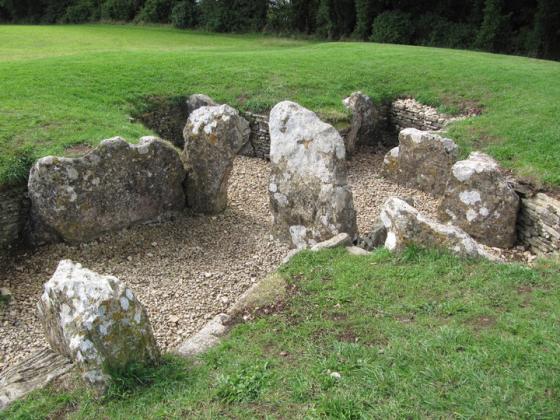



From another angle.

Photo taken in heavy rain so not as clear as it could be.
news.bbc.co.uk/hi/english/uk/england/newsid_1670000/1670707.stm
An amateur historian has found a lost standing stone in his own “back garden” – 18 months after beginning a search for it.
Stephen Davis and historian friend Clare Forbes used ancient documents to help track down The Horestone near Stroud, Gloucestershire, some
350 years after it was lost.
Mr Davis learned of the stone when he began researching the history of his own house in 1987.
He then started to swap notes with local historian Ms Forbes and this led to the pair agreeing to look for the stone together.
The first known reference to the stone was in legal documents dated 1170.
But it is believed to mark a Bronze Age burial site dating back to around 2,500 BC.
The area was declared common land after a law suit was fought over it in the 14th Century.
Its last official recording was in 1636 in a tax record.
The land on which it stands, which is behind Mr Davis’ house, was sold off 300 years ago and is now part of a housing estate.
‘Astonishing moment‘
The two stone-hunters feared the ancient rock on Rodborough Common might have been smashed up or buried to destroy its magical powers.
Mr Davis said: “We had no reason to believe that we’d actually find it. These things are buried, ploughed over or they just fall over.”
They almost missed finding it because it was so overgrown with ivy it looked like a tree stump.
But both said they were glad to find it and “unpick the lock of ancient history around Rodborough”.
On uncovering the stone, Mr Davis said: “It’s curious to excavate a piece of history. It wasn’t just stumbling across it, but just stumbling across
it while we were looking for it.
“It was the most astonishing of moments. It spoke immediately of lost time and still had all the atmosphere of a pagan shrine.
“I was certainly not expecting to have such a stunning moment in my own back garden.”
English Heritage is now expected to declare the six-feet-high stone a scheduled ancient monument.
Visited 27/10/2011:
To be completely honest, I first read about this stone on the Megalithic Portal website about two weeks ago. It fired up my imagination as I had been on Minchinhampton Common very recently. Minchinhampton Common and Rodborough Common meet at around the point where this stone is located. Having said that, however, it is one of the most obscure stones I’ve ever managed to locate.
I could not have found it without the assistance of my good friend M who provided the transport, OS map and large brolly – as it was persistently raining.
We left my friend’s car by the Bear Inn which is just where the road crosses from Minchinhampton Common into Rodborough Common – free range cattle wandering across the roads.
Bownham Park residential estate in just across the road from the Bear Inn walking slightly uphill. There are two entrances into the estate both say ‘private road’. If you enter (you can drive in) by the main entrance (look for ornamental white chains and posts) straight ahead about 50 metres in you will see the wrought iron gates of Bownham House – turn left here and follow the road downhill for about 150 metres. Look for a turning on your right near to the bottom of the hill which has a sign saying “Nos 18, 20, 22 only”. Go to the top of this short uphill road and you will find the stone in the shrubbery under a large tree near the entrance of the very last house.
I would like to say it is in character with the holey oolite stone at Minchinhampton but I’m afraid it is not really, no similar evidence of erosion. I’m not sure what type of stone it is – probably limestone.
It has been set in concrete with a strange step holding it all in place and imagine it stood on this spot long before the modern houses were built, though it is possible that it was moved during the building of the houses – hence the concrete setting.
It would be interesting to here the views of other TMA-ers.


































































